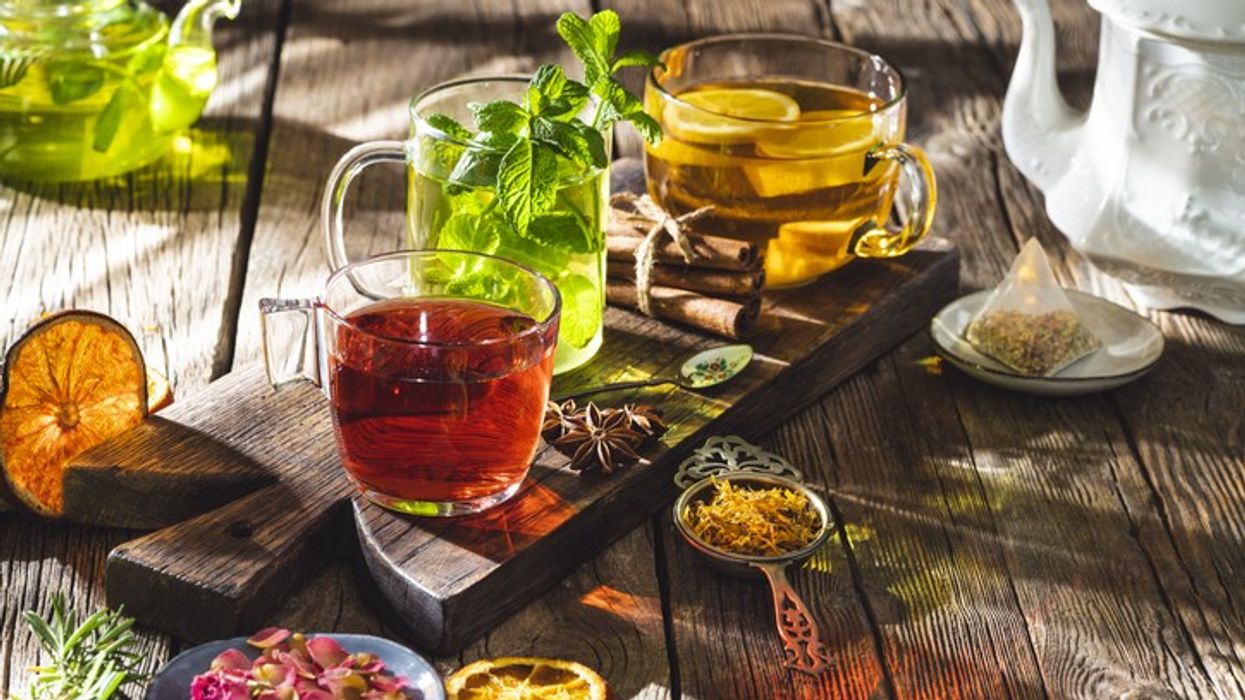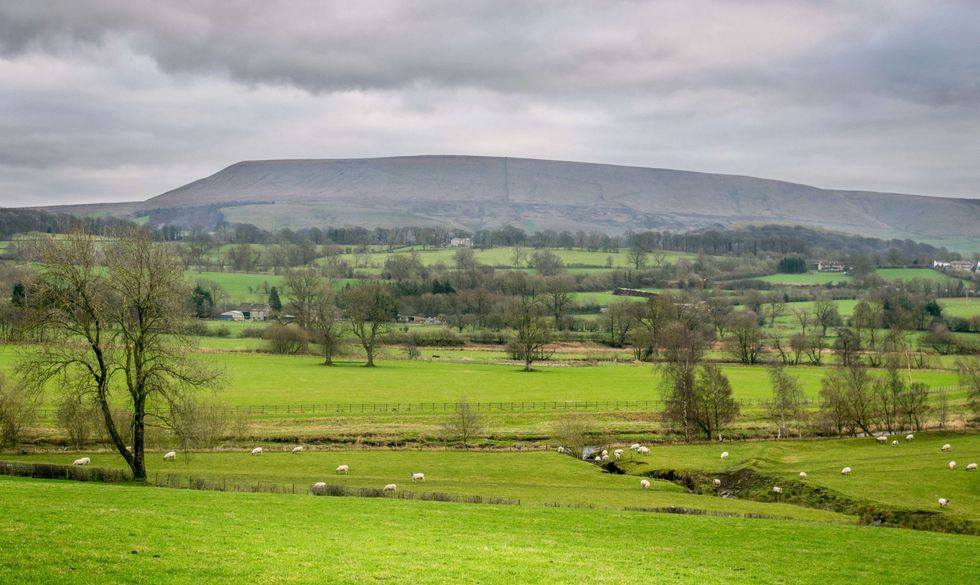Herbal tea is a tasty drink that offers numerous health benefits. Although drinking water is crucial for maintaining hydration, incorporating herbal teas like chamomile or ginger tea into your diet can provide additional benefits, such as antioxidants and essential nutrients.
Additionally, herbal teas have long been a go-to for combating the winter blues and providing comfort, but their popularity extends beyond just their warm and soothing qualities.
In addition to being delicious, herbal teas also boast a range of health benefits and have been used for medicinal purposes for centuries. From fighting various health issues to promoting overall well-being, herbal teas are a beloved drink for good reason.
Agreeing, Nmami Agarwal, a nutritionist, told The Indian Express, “A lot of herbs can be infused together to make a strong and impactful tea. These teas can have a variety of health benefits, such as relaxation and stress relief, improved digestion, deeper sleep, relief from headaches, better heart health, weight loss, and boosted immune system.”
As emphasised by nutritionist Lovneet Batra, if you are facing a specific health concern, the expert recommends trying five herbal teas that may help alleviate the problem.
Chamomile tea
According to nutritionist Batra, if you are experiencing sleep difficulties, chamomile tea may be just what you need. Chamomile tea is known for its special properties that promote faster and deeper sleep.
The tea contains an antioxidant called apigenin, which binds to specific receptors in the brain, promoting feelings of calmness and relaxation. This can help cure insomnia and provide an effective remedy for those struggling with sleep issues.
As suggested by Batra, it is recommended to drink chamomile tea before bedtime for maximum benefits. The tea can be simply prepared by steeping chamomile flowers in hot water for 2-3 minutes, then straining the mixture.
A previous report in Medical News Today (MNT) informs that chamomile tea offers numerous health benefits and is a drink worth incorporating into your routine. The benefits of chamomile tea include:
• Improved sleep
• Reduced anxiety
• Lowered blood sugar levels
• Decreased inflammation
• Relief for common cold symptoms
Ginger tea
Ginger is reportedly a potent superfood on its own, and when transformed into a tea, it becomes a warm and nourishing drink with numerous health benefits. The health benefits of ginger tea include:
• Improved digestion
• Reduced heartburn
• Decreased inflammation
• Enhanced blood circulation
• Boosted immune system
If you often suffer from feelings of nausea, ginger tea may be the solution you need. This is because it contains a compound called 6-gingerol, which helps alleviate nausea.
Additionally, ginger tea can also help relax the muscles of the gastrointestinal tract and provide relief from motion sickness during pregnancy.
Agreeing Agarwal adds, “Ginger contains compounds that can help reduce inflammation and pain, making it useful for conditions such as osteoarthritis and rheumatoid arthritis.”
In fact, Healthline states that two studies reportedly found that ginger was as effective as non-steroidal anti-inflammatory drugs (NSAIDs), such as ibuprofen, in reducing period pain.
As advised by Batra, it is recommended to drink ginger tea early morning. To make a cup of this tea, simply boil a small piece of ginger root (approximately half an inch) in water for a few minutes, then strain the mixture.
Lemongrass and ginger tea
Lemongrass is recognised for its ability to regulate blood glucose levels through its anti-hyperglycemic properties, as it inhibits the enzymes alpha-amylase and alpha-glucosidase.
Similarly, ginger can also have anti-diabetic effects by inhibiting alpha-glucosidase and containing beta sesquiphellandrene, which increases insulin sensitivity.
However, Agarwal notes that while lemongrass and ginger tea are effective in reducing blood sugar levels, fenugreek and cinnamon tea may be a more effective alternative.
Lemongrass and ginger tea can be enjoyed in the morning. To prepare the tea, gather some lemongrass stalks and a piece of medium-sized ginger. Boil the ingredients together in water for approximately 10 minutes, then strain the mixture into a cup. Your delicious and healthy tea is now ready to be consumed!
Hibiscus tea
Hibiscus tea is made with the flowers of the hibiscus plant. With a distinctive pink-red colour and tart taste, hibiscus tea not only looks and tastes great, but it also provides numerous health benefits.
Hibiscus tea is also known to have pain-relieving properties that can ease menstrual cramps by relaxing the muscles in the bladder and uterus.
“The tea also contains a variety of compounds that have anti-inflammatory properties, including anthocyanins and flavonoids, which can help to reduce inflammation and pain,” Agarwal said.
She also highlights other potential benefits of hibiscus tea, including reducing high blood pressure and cholesterol levels.
Moreover, sipping hibiscus tea can also help regulate aldosterone levels, a hormone produced in the adrenal gland that controls the balance of water and salt in the body. Additionally, hibiscus tea acts as a diuretic, reducing bloating.
To enjoy its full benefits, it is recommended to drink hibiscus tea one week before the start of your menstrual cycle. Simply add some hibiscus flowers to boiling water and let the mixture steep for about five minutes. You can then sweeten it to taste and enjoy the delicious and healthful tea.
Tulsi or holy basil tea
Tulsi tea is said to have medicinal properties that can aid in the control of asthma and bronchitis. It enhances the immune system by providing anti-allergic effects in the body.
The tea also helps to protect the bone marrow, which produces red blood cells and white blood cells that help to strengthen the immune system.
Other benefits of tulsi tea, as highlighted by Agarwal, include reducing fever through promoting sweating and decreasing stress and anxiety. However, she states that further research is required to determine if tulsi tea is effective in regulating blood sugar levels.
You can enjoy a refreshing cup of tulsi tea at any time of the day. Simply take 5 to 10 tulsi leaves and place them in a teapot with boiling water. Let the leaves infuse for a few minutes, strain the mixture, and enjoy your tea.






 Highgate Cemetery, LondonShutterstock/Gemini
Highgate Cemetery, LondonShutterstock/Gemini Pendle Hill, LancashireShutterstock/Gemini
Pendle Hill, LancashireShutterstock/Gemini Pluckley, Kent - Reputedly England’s most haunted village, with spirits like the "Red Lady"Shutterstock/Gemini
Pluckley, Kent - Reputedly England’s most haunted village, with spirits like the "Red Lady"Shutterstock/Gemini 50 Berkeley Square, Mayfair, LondonWikipedia/London and beyond
50 Berkeley Square, Mayfair, LondonWikipedia/London and beyond Ancient Ram Inn, GloucestershireShutterstock/Gemini
Ancient Ram Inn, GloucestershireShutterstock/Gemini Britain’s most chilling haunted places Shutterstock/Gemini
Britain’s most chilling haunted places Shutterstock/Gemini 






